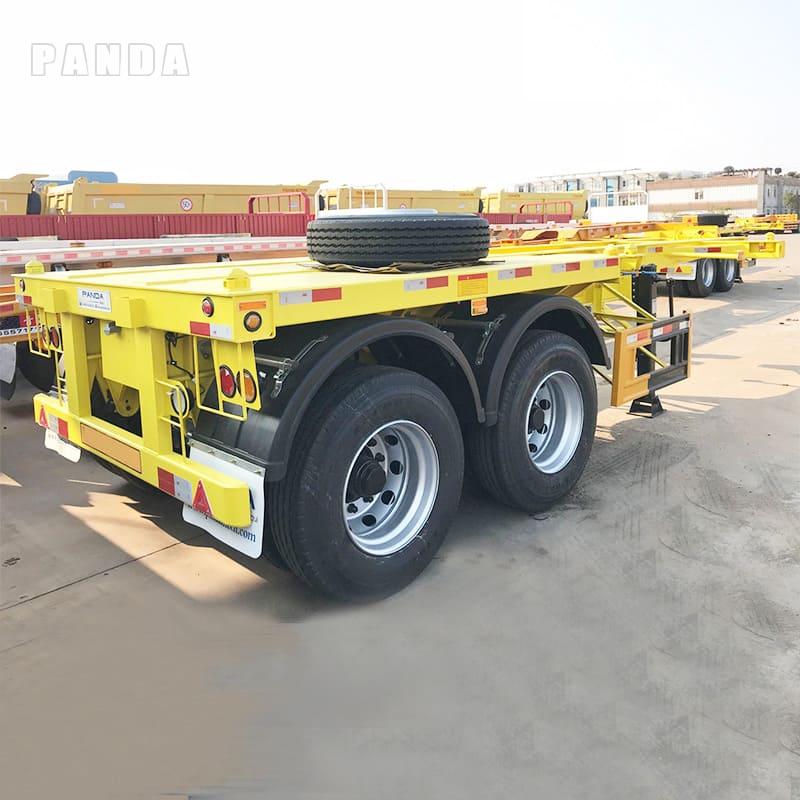The cement trailer air compressor is a specialized type of air compressor used specifically for transporting and unloading bulk cement from a cement trailer. Unlike standard air compressors, this one is uniquely designed to handle the high-pressure and high-flow requirements that come with moving large quantities of cement. When the trailer reaches its destination, the air compressor comes into action, using its stored compressed air to push the cement out of the trailer and into a silo, storage unit, or directly onto a job site.
Related: What is cement trailer?
The cement trailer air compressor is a vital tool in the construction industry, facilitating the efficient and safe transport and unloading of bulk cement. Its specialized design and functionality make it an indispensable asset in modern construction logistics.

1. What is scfm air compressor?
SCFM, or Standard Cubic Feet per Minute, is a unit of measurement that tells you the volume of air an air compressor can deliver at a specific pressure and temperature. In simpler terms, think of SCFM as the air compressor’s “horsepower.”
It is a crucial specification to understand when choosing an air compressor, as it gives you an idea of the machine’s capacity and suitability for various tasks. The higher the SCFM rating, the more air the compressor can supply, which generally means it can power more tools or complete tasks more quickly. This number is a reliable indicator of the unit’s capability and can guide you in making an informed, effective choice for your specific needs.
2. How to use an air compressor?
Using the cement trailer air compressor is a relatively simple thing, we just need to use it step by step according to the steps, and then we can use the air compressor to complete the uninstallation.
Step 1: Safety First
Before you start, ensure you’re wearing appropriate safety gear. This includes safety goggles, gloves, and ear protection.
Step 2: Inspection
Inspect the air compressor and cement trailer for any visible signs of wear, leaks, or damage. Address any issues before proceeding.
Step 3: Connection
Connect the air compressor to the cement trailer using the appropriate hoses and fittings. Make sure all connections are secure to prevent leaks.
Step 4: Power Up
Turn on the air compressor. Let it run for a few moments to build up sufficient pressure in the storage tank. Monitor the pressure gauge to ensure it reaches 0.2Mpa.
Step 5: Check Valves and Controls
Ensure all valves on the trailer are in their correct positions. Double-check the controls to confirm they are set for unloading.
Step 6: Begin Unloading
Once everything is set, open the discharge valve on the cement trailer. The compressed air will now push the cement through the trailer’s piping and out into the designated storage unit or directly onto the job site.
Step 7: Monitor
Keep an eye on the pressure during the unloading process.
Step 8: Complete Unloading
When the cement trailer is empty, close the discharge valve. Shut off the air compressor and relieve any remaining air pressure safely.
Understanding how to use a cement trailer air compressor is crucial for safety and efficiency.
2.1 How to turn on the air compressor?
Turn the pressure regulator knob counterclockwise to set it to the lowest pressure setting. This ensures the compressor starts up with minimal resistance. Locate the power switch, often labeled ‘On/Off,’ and turn it to the ‘On’ position. You’ll hear the motor start, and the compressor will begin filling its tank with air.
2.2 How to adjust air compressor pressure switch
- Start by turning off and unplugging the compressor.
- Locate the pressure switch, usually a small box with a few dials.
- Open its cover to reveal the adjustment screws: one for high pressure (‘cut-out’) and another for low pressure (‘cut-in’).
- Using a screwdriver, turn the ‘cut-in’ screw to set the minimum pressure level at which the compressor will kick on.
- Then, adjust the ‘cut-out’ screw to set the maximum pressure.
- Finally, run a test cycle to ensure the adjustments are correct.
3. How does an air compressor work?
Air compressor works by converting air into stored compressed air. It all starts when you switch on the compressor, activating a motor. This motor drives a piston inside a cylinder, pulling in air as it moves downward. On the upward stroke, the piston compresses the air, which is then pushed into a storage tank. A pressure gauge monitors the air pressure, and when it reaches a set maximum (‘cut-out’), the motor automatically turns off. Conversely, when you use the stored air and the pressure drops to a certain minimum (‘cut-in’), the motor reactivates to refill the tank, tire, or other.
4. How much cement can a typical air compressor unload per minute?
Common air compressor unload speed: 1.2-1.5 t/min.
5. How long does it take to unload a 40 ton 50 ton 60 ton cement bulker?
40 Ton cement bulker unload time: 30-35 minutes.
50 Ton cement bulker unload time: 40-45 minutes.
60 Ton cement bulker unload time: 50-55 minutes.
25-120 Ton cement bulker: 15-80 miuntes.
6. How often should an air compressor be serviced?
Every time the air compressor runs for two thousand hours, we need to perform maintenance on the air compressor. Or once a year, or every six months if it is used more frequently.
7. How much is the air compressor?
$1,000-2,500 per air compressor.
This is the end of the introduction about cement trailer air compressors, any questions about air compressors, feel free to consult us.



